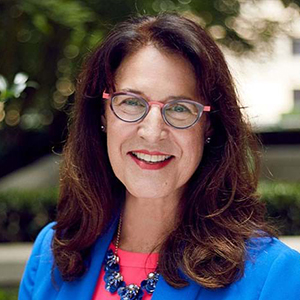
We’re Here: #balanceforbetter this International Women’s Day
Last month, I saw something remarkable on my TV screen: rows and rows of congresswomen sitting in the gallery at the State of the Union address, all dressed in white. They chose the color to honor the suffragists who secured American women’s right to vote one hundred years ago this June, and — as Rep. Rashida Tlaib told Time magazine — “to show all the young girls across the country, all the young women that the women’s rights movement hasn’t stopped, it’s continued and it’s now in the United States Congress. We’re here.”
“We’re here.” It’s a bold statement, and it’s truer than ever before. Last year’s midterms brought a record 106 women to Congress — almost one-quarter of the chamber’s voting members. (Likewise, 25 of 100 senators are women.) All those white suits, dresses, and capes sent a powerful message: to the president, who’s accustomed to looking at a sea of yes-men (and yes, they’re almost always men) in acquiescent navy suits; and to all of us watching at home. It’s not equality, but it’s getting closer — and we can see it.
But just being here isn’t enough. Wherever they choose to go, whatever they choose to do, we have to make sure women can thrive. It’s not about symbols; it’s about change.
That’s why we celebrate International Women’s Day.
International Women’s Day has been around since the Progressive Era, but the United Nations officially celebrated it for the first time in 1975. That year, according to the U.S. Bureau of Labor Statistics, women’s labor-force participation rate in the U.S. was about 45% — that is, about 45% of women worked outside the home — and they comprised about 40% of the total labor force. Also that year, 12 years after President Kennedy signed the Equal Pay Act, a woman who worked full-time earned almost, but not quite, 59 cents for every dollar earned by her male counterpart.
This year, women’s labor-force participation rate will be around 60%. We’ll comprise nearly half of the total labor force. And we’ll earn about 81 cents for every dollar men earn. It’s not equality, though it’s getting closer — and still, it’s not enough.
#BalanceForBetter
What can we do about this? How can we advocate for ourselves and our colleagues, and — perhaps especially — for women who might not have the power or the platform that we have?
On a micro level, as the founder and CEO of a company where 72% of the employees are women, I feel a special responsibility to be sure our offices function fairly and equitably. We try to be thoughtful about elevating women’s voices as powerfully and as often as we elevate men’s — especially important in our industry, where agencies are overwhelmingly staffed by women but often led by men. In fact, over 50 percent of our C-suite are women. Outside of WE, I sit on the board of ColorComm, an amazing organization dedicated to connecting and empowering women of color in our industry.
To be clear: we don’t do these things for the benefit of women alone. We do these things because we know that equality and inclusion benefit us all. The perspectives diversity and inclusion bring improve our workplaces; they also improve our work. (There’s evidence that companies whose boards include women do better than companies with all-male boards, for instance.) I believe that’s what #BalanceForBetter, this year’s theme for International Women’s Day, means.
But it also means something more. Lifting one another up, standing shoulder to shoulder in solidarity with our colleagues — that’s a big step in the right direction. But like our predecessors, the activists who founded International Women’s Day, we also have to be ready to fight for genuine, structural change. We have to be prepared to do more than just fiddle around the edges of inequality.
That’s why I’m so glad we have those 106 congresswomen and 25 senators. It’s why, ironically, I feel so much better about the state of the world when I see things like last month’s open letter from women leaders like Ethiopian president Sahle-Work Zewde and Helen Clark, the former prime minister of New Zealand, calling for a pushback against the erosion of women’s rights around the world. “We cannot be comfortable,” former Argentinian foreign minister Susana Malcorra told the Guardian. “We haven’t arrived to where we should be: equality in every possible field.”
So: How do I propose we celebrate this International Women’s Day? It might not always feel like it, but we are lucky: we have a platform. We have a megaphone. We have a voice. We are storytellers. And through communications, we can find power. I propose that all of us — women, men, and non-binary folks alike — honor the women who came before us, and each other, by putting on suffragist white (whether that’s a world-famous cape-jacket or your favorite t-shirt), digging in our heels, and demanding to be heard. We’re here — and we’re not going away.
Read more posts from WE Global CEO and Founder Melissa Waggener Zorkin here.
The latest blogs from WE
Decoding Gen Alpha: A Primer on the Next Gen of Consumers
Why Gen Alpha Will Fuel Spending This Season
Why Reputation Is a Business Driver in Healthcare


